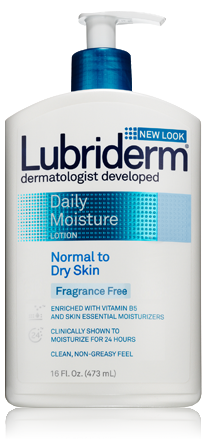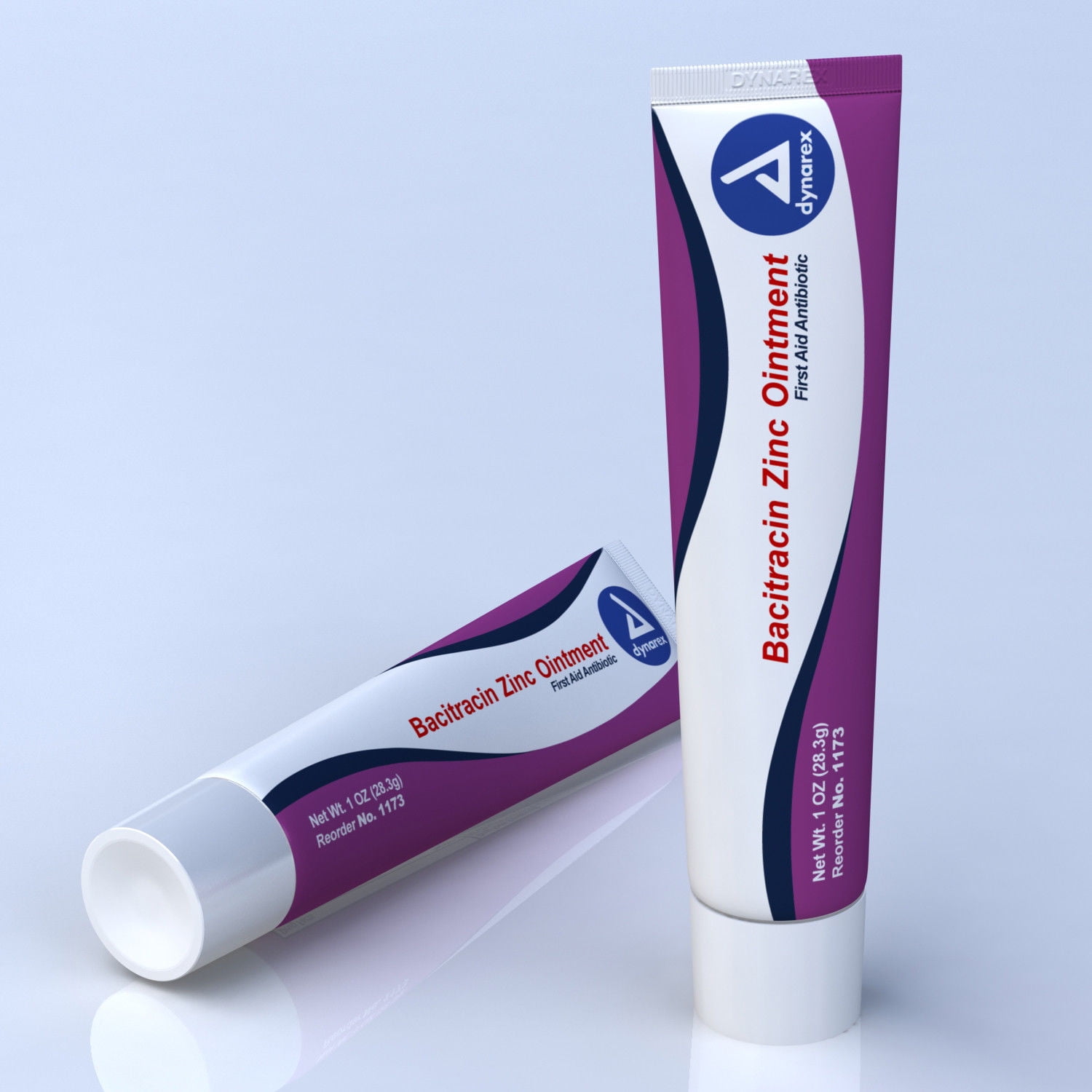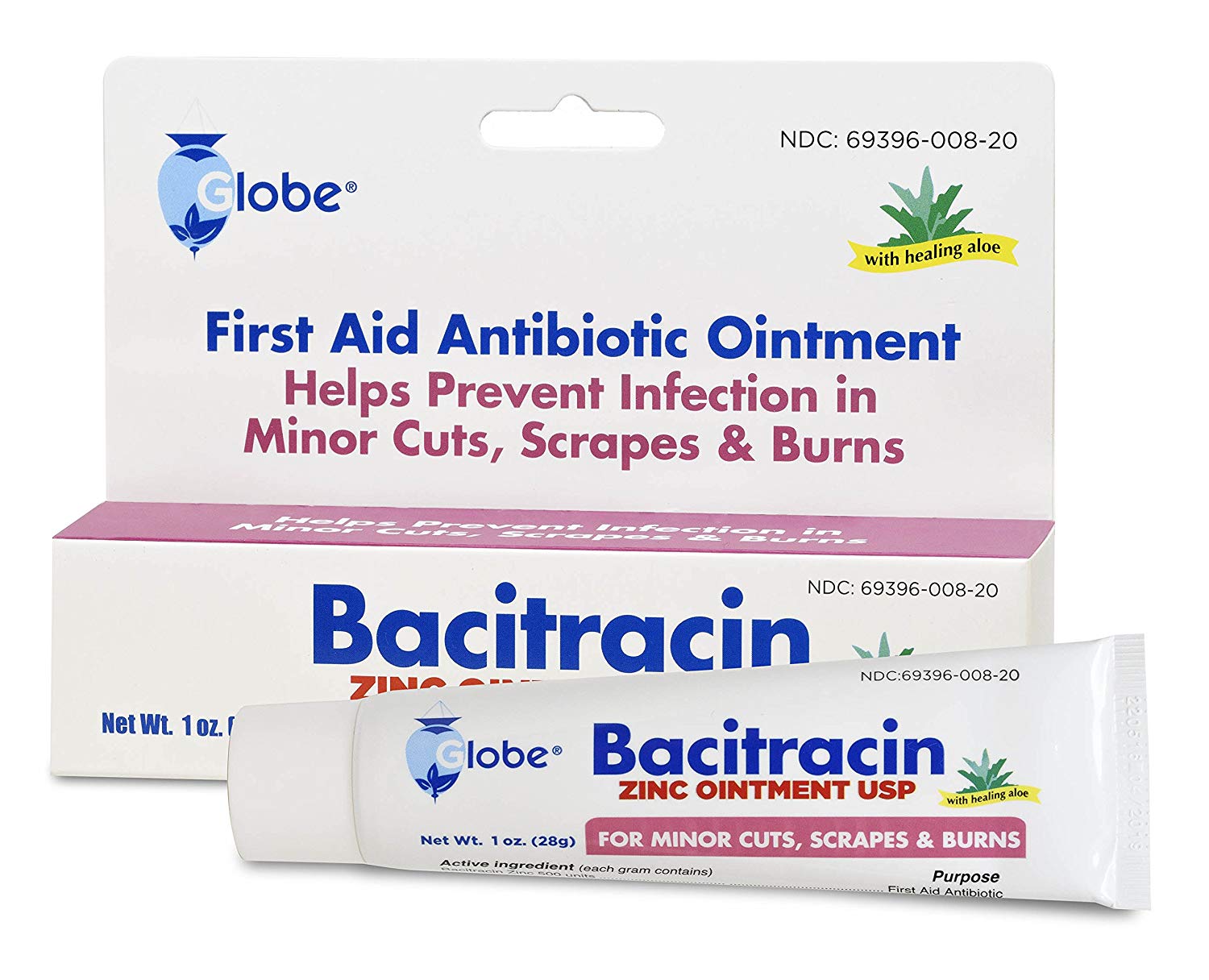Throughout most of history, serious burns occupying a large percentage of body surface area were an almost certain death sentence because of subsequent infection. However the relentless increase in microbial resistance to antibiotics and other antimicrobials has led to a renewed search for alternative approaches to prevent and combat burn infections. This review will cover patented strategies that have been issued or filed with regard to new topical agents, preparations, and methods of combating burn infections. Animal models that are used in preclinical studies are discussed. This active area of research will continue to provide new topical antimicrobials for burns that will battle against growing multi-drug resistance.
For minor burns, soak the burn in cool water for at least 5 minutes. The cool water helps reduce swelling by pulling heat away from the burned skin. Treat the burn with a skin care product from your first aid kit that protects and heals skin. This would include products such as aloe vera cream or an antibiotic ointment. You can wrap a dry gauze bandage loosely around the burn. This will protect the area and keep the air off of it.
An over-the-counter pain reliever can help treat swelling, inflammation, and pain. Infection is common in burns because the injury causes the skin to lose its natural barrier to microbes; this allows pathogens to have a direct entry route to the wound. Infection of burn wounds can delay healing and encourage scarring. Data from the French Burns Centres indicates that 19% of inpatients with burns develop an infection . Despite substantial advancements in burn care and antibiotic management, infection remains the leading cause of death in people with a burn wound . Mafenide acetate 0.5% cream is a methylated topical sulfonamide compound.
Since topical mafenide acetate cream can be used without dressings, so it allows open burn wound therapy and regular examination of the burn wound surface . Mafenide was introduced prior to silver sulfadiazine and was widely used for the treatment of burns. A 5% solution must be applied to saturate gauze dressings. The solution appears to be as effective as the cream preparation when used in this way . This agent should be used in combination with nystatin to prevent this complication due to its limited antifungal activity .
Use of antibiotics in people with infected burn wounds is more complicated than in other diseases. This is because the pharmacokinetic parameters of antibiotics are altered in the burned person, and significant variations exist between individuals (Conil 2006; Kiser 2006; Mohr 2008). The main change is insufficient tissue concentration of antibiotics, which leads directly to failure of therapy and drug resistance; subsequently, drug resistance reduces the efficacy of usual doses of antibiotics .
Consequently, the standard recommended regimen may not be suitable for burn patients. As discussed above, the use of silver fell into disuse with the advent of antibiotics. The renewed interest in silver comes as a consequence of the rapid development of bacterial resistance. In the 1970s, Fox decided that it was unnecessary to choose between silver and antibiotics; he combined silver nitrate with the antibiotic sodium sulphadiazine. This formulation, known as silver sulfadiazine , benefits from the inhibitory effect of silver and the antibacterial action of sulphadiazine . Silver sulfadiazine was initially formulated as an ointment, but was later incorporated into a hydrophilic cream .
Although SSD remains the gold standard in topical burn treatment, recent studies indicate that SSD may delay wound healing. Cho Lee et al. found that epidermal growth factor could significantly counter the deleterious effects of SSD on wound healing, and concluded that future preparations of SSD may come coupled with EGF. Another problem associated with SSD remains bacterial resistance to the sulphadiazine component . SSD-resistant Pseudomonal species have been reported; a patent was issued for a formulation to combat these species, a combination of SSD and sodium piperacillin .
Other patents have been issued for various SSD delivery systems, including animal tissue dressings , water-dispersible hydrophilic carriers , and topical spray preparations . Widespread application of effective topical antimicrobial agents reduced the microbial load on the burn wound surface and reduced the risk of infection . Selection of topical antimicrobial therapy should be based on the agent's ability to inhibit the microorganisms recovered from burn wound surveillance cultures. The chemical structures of the antibiotics that are particularly used for topical application in burns are shown in Fig.
Current patents describe the potential applications of these agents for wound dressings, bio-membrane, and wound coating material, postoperative adherent and cosmetic material applications. Burn units may rotate the use of various topical antimicrobial preparations to decrease the development of antibiotic resistance . Certain wounds, such as scrapes that cover a large area of the body, should be kept moist and clean to help reduce scarring and speed healing.
Antibiotic ointments help heal the scrape and prevent infection. Most minor cuts and scrapes will heal just fine without antibiotic ointment, but it can help the wound close up and help reduce scarring. In recent years, wound excision and topical antimicrobial treatments have been the most widely accepted interventions for moderate to severe burns . Sliver compounds that deliver local treatments of polyclonal immunoglobulin and antibiotics have been used to treat infected burn wounds and have shown promise in clinical practice.
The medical uses of silver date back to at least the time of Hippocrates (the "father of modern medicine" ), who in his writings discussed silver's role in wound care. By the late nineteenth and early twentieth century, surgeons routinely used silver sutures to reduce the risk of postoperative inflammation and infection . During World War I, soldiers used silver leaf to limit and treat battle wound infections . Silver fell into disuse around World War II due to the advent of antibiotics. Interest in the antimicrobial properties of silver was only reinvigorated in the year 1965 by Moyer who published a paper on silver nitrate's antibacterial effects . Today, silver has reemerged as a clinical treatment for the prevention and treatment of infections encountered in wounds, ulcers, and burns .
Third-degree and more severe burns damage both layers of the skin and may also damage the underlying bones, muscles, and tendons. Sometimes there is no pain because the nerve endings under the skin are destroyed. This surgery, done with general anesthesia, removes the injured skin and replaces it with healthy skin from an uninjured area of the body. Full thickness burns that are not grafted may take months or even years to heal.
Burn survivors may have a combination of first, second, and third degree burns. Talk with your health care providers to better understand your specific injuries. This medication is used to prevent and treat minor skin infections caused by small cuts, scrapes, or burns. It is available without a prescription for self-medication.Do not use this product over large areas of the body. Ask your doctor first before using this product for serious skin injuries or infections (e.g., deep cuts, puncture wounds, animal bites, serious burns).
A different treatment may be necessary for these types of conditions.This product contains neomycin, bacitracin, and polymyxin, antibiotics that work by stopping the growth of bacteria. This medication prevents/treats only bacterial skin infections. It will not work for other types of skin infections (e.g., infections caused by fungi, viruses). Unnecessary use or misuse of any antibiotic can lead to its decreased effectiveness. People with infected burn wounds, regardless of age, race and gender.
We will include any severity of burn injury (determined by percentage of total body surface area burned or objective assessments) and any type of burn. We will accept the authors' definitions of 'infected burn wound' used in each original trial, which may be conducted in any setting . Each diagnostic criterion will be described in the 'Characteristics of included studies' table. Due to the limited resources for the management of burns in most regions of Africa there is a significant role for many aspects of traditional African medicine.
Carica papaya is currently used in The Gambia as the major component of burns dressings, where the pulp of the papaya fruit is mashed and applied daily to full-thickness and infected burns. It appears to be effective in desloughing necrotic tissue, preventing burn wound infection, and providing a granulating wound suitable for the application of a split thickness skin graft. Possible mechanisms of action include the activity of proteolytic enzymes chymopapain and papain, as well as an antimicrobial activity. In 1976, Monafo et al. added cerium nitrate to SSD in the treatment of burn wounds, and concluded that the two ingredients had a synergistic effect . Since that time, cerium nitrate-SSD has been routinely used in wound care.
However, the efficacy of this combined formulation is disputed . In 2005, Garner et al. conducted a review of pertinent literature and concluded that cerium nitrate-SSD reduces mortality and morbidity in severe burns when immediate excision and closure is not possible . However, contrary to the hypothesis furthered by Monafo, Garner et al. concluded that cerium nitrate possesses minimal antimicrobial action, and gains its benefit from its action on burn eschar.
Burned skin produces a lipid protein complex that causes immunosuppression in the burn patient, which leads to increased susceptibility to infection . Cerium nitrate binds to and then denatures this lipid protein complex, thereby preventing immunosuppression . Patents have been issued for various delivery systems for cerium nitrate-SSD, including a creamlike water-dispersible hydrophilic composition . Antibiotic (an-ti-bahy-OT-ik) ointments or creams are often used to prevent or treat infections in patients with second-degree burns. Using these ointments may require the use of bandages.
Your doctor can assist you in coordinating the dressing changes with your pain medication. Dressings can be soaked off with water in a sink or shower. The skin and the burn wound should be washed gently with mild soap and rinsed well with tap water.
Use a soft wash cloth or piece of gauze to gently remove old medications. A small amount of bleeding is common with dressing changes. Your doctor will decide on the appropriate dressing and ointment. This will be based on the location of the burn, the need to control drainage, and your comfort. Wounds that are moist heal more quickly compared to wounds that are not moist. Use antibiotic ointment for cuts and scrapes to keep them moist.
Creams and ointments also help prevent bandages from sticking to the wound. Apply a thin layer of antibiotic ointment to a wound to help keep it moist and help reduce the risk of infection. Mupirocin is a fermentation product of Pseudomonas fluorescens , which was a potent inhibitor against gram-positive skin flora such as coagulase-negative staphylococci and Staphylococcus aureus . Pharmaceutical compositions comprising mupirocin and chlorhexidine are of use in treating topical bacterial infections, in particular infected burn injuries . Mupirocin has also increasingly been used as a burn wound topical agent in North America, where MRSA has become a problem . Various topical antibiotic preparations, including 1% silver sulfadiazine, 2% mupirocin, and 2% fusidic acid, were recently compared for their antibacterial effect in an MRSA-infected rat burn model .
Therefore, hospitals where MRSA is a problem may rotate the use of topical mupirocin in combination with these other agents to decrease the development of resistance. First aid for puncture wounds includes cleaning the area thoroughly with soap and water. If the area is swollen, ice can be applied and the area punctured should be elevated. Cover the wound with a bandage to keep out harmful bacteria and dirt. Cleanse the puncture wound and change the bandage three times a day, and monitor for signs of infection .
Change the bandage any time it becomes wet or dirty. Bacitracin and Neosporin are over-the-counter antibiotic ointments used to prevent infection of minor skin injuries such as cuts, scrapes, and burns. Bacitracin ointment is available in generic form and contains only bacitracin.
If the burn is a second or third degree burn and you are not up to date with your tetanus shot, you should get a tetanus shot within the first two days of contracting your burn. Burns are serious injuries and secondary infections from burns are common. Tetanus is caused by the organism Clostridium tetani, and large open wounds caused by burns are good breeding ground for the bacteria, which can lead to tetanus. Tetanus is a bacterial infection characterized by painful muscle spasms and lockjaw and can even lead to death.
It is recommended to have a tetanus shot at least every ten years to reduce risk of this infection and is particularly necessary in instances of injury such as burns. If any signs of infection develop, patients should be referred to a burn unit. There are a large number of diverse topical antimicrobial agents that have been approved, tested or proposed for the prevention and/or treatment of burn infections.
The particular pathophysiology of burns does predispose them to infection with a variety of pathogens, and experience has shown that topical therapies produce better outcomes than traditional systemic antibiotics. Moreover the ever-increasing spread of multidrug resistance only serves to underline the importance of effective and safe topical therapies. The development of these topical antimicrobial approaches has been a fertile field for both small and large biotechnology companies as may be judged by the number of patents covered in this review. Severely burned skin ceases to perform its natural protective and barrier role and allows a dramatic increase in water loss and can become a portal for bacterial invasion. The systemic response to burning is driven by the loss of the skin barrier and release of vasoactive mediators from the wound and from subsequent infection. When the burn size exceeds about 25% of the body surface, interstitial edema develops in distant organs and soft tissues, mainly secondary to a combination of wound-released mediators and hypoproteinemia .
This may be complicated by systemic inflammatory response syndrome and marked immune suppression. Subsequent wound infection and bacterial translocation from the gastrointestinal tract promotes sepsis . This adds to the final common pathway to multi-organ failure and death Fig.
Phage therapy was discovered as long ago as the 1920s , and has been considered to be a possible approach to burn infections. The disadvantage has been considered to be the narrow specificity of phages to particular species and strains of bacteria. McVay et al. found that a cocktail of 3 phages could significantly decrease the mortality of thermally injured, P. aeruginosa-infected mice. Malik and Chhibber demonstrated the protective effect of K. Pneumoniae-specific bacteriophage KO1 isolated from the environment in a mouse model of burn wound infection induced by K. A substantial decrease in the bacterial load of blood, peritoneal lavage, and lung tissue was noted following treatment with the bacteriophage preparation.
A patent was issued for a cocktail of anti- P. aeruginosa phages for topical application . Defensins are a family of cationic antimicrobial peptides exhibiting bactericidal, fungicidal and antiviral activity [211–213]. They are part of a non-specific chemical defense system secreted by non-lymphoid cells . When released into the extracellular milieu, they exert their antimicrobial activity directly by attacking the microbial membrane, and contribute to the oxygen-independent killing of phagocytosed microorganisms. Furthermore, defensins are mediators in the crosstalk between the innate and adaptive immune systems . Human B-defensin-1 has been detected in urogenital, gastrointestinal and pulmonary epithelia and most recently in skin [215–217].
Studies have shown decreased levels of AMPs mainly defensin associated with burns .which facilitates infection and subsequent sepsis. This reduction in defensins may also alter functions of T- and B-lymphocytes, neutrophils, macrophages, and complement, thereby contributing to the pathophysiology of burn-related systemic inflammatory responses . They may also protective role in preventing infection within burn wounds as altered expression of these peptides could promote local overgrowth of micro-organisms. During the 1970's, human amniotic membrane emerged as a useable dressing in burn patients. Sawhney concluded that this biological dressing was superior to conventional dressing, as it promoted rapid re-epithelialization and healing of wounds. Since 1978, silver has been incorporated into amniotic membrane, producing significantly better results than amniotic membrane alone .
























No comments:
Post a Comment
Note: Only a member of this blog may post a comment.